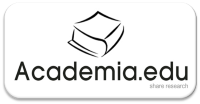TEACHER AND STUDENTS’ PERCEPTIONS TOWARD THE USE OF STUDENTS’ L1 IN EFL CLASSROOM
Abstract
Keywords
Full Text:
PDFReferences
Adnan, Mohamad Azrien Mohamed, Shukeri Mohamad, Mohd Alwee Yusoff, and Zamri Ghazali. 2014. “Teachers’ Attitudes Towards the Use of First Language in Arabic Classroom.” Researchers World – Journal of Arts Science & Commerce 5(2):22–30.
Alvarez, Luis Fernando Cuartas. 2014. “Selective Use of the Mother Tongue to Enhance Students’ English Learning Processes…beyond the Same Assumptions.” PROFILE: Issues in Teachers’ Professional Development 16(1):137–151.
Atkinson, David. 1987. “The Mother Tongue in the Classroom: A Neglected Resource?” ELT Journal 41(4):241–47. doi: doi.org/10.1093/elt/41.4.241.
Auerbach, Elsa Roberts. 1993. “Reexamining English Only in the ESL Classroom.” TESOL Quarterly 27(1):9–32. doi: https://doi.org/10.2307/3586949.
Brown, H. Douglas. 2001. Teaching by Principles: An Interactive Approach to Language Pedagogy. New-York: Longman.
Cook, Vivian. 2001. “Using the First Language in the Classroom.” The Canadian Modern Language Review 57(3):402–423. doi: https://doi.org/10.3138/cmlr.57.3.402.
Elmetwally, Elmetwally Elmenshawy. 2012. “Students’ and Teachers’ Attitudes toward the Use of Learners’ Mother Tongue in English Language Classrooms in UAE Public High Schools.” The British University in Dubai.
Hartono, Danny Agus Wahyudi. 2013. “Teachers’ Perception about the Use of English and Indonesian in the EFL Classroom.” Satya Wacana University.
Hidayati, Istiqlaliah Nurul. 2012. “Evaluating the Role of L1 in Teaching Receptive Skills and Grammar in EFL Classes.” Indonesian Journal of Applied Linguistics 1(2):17–32. doi: http://dx.doi.org/10.17509/ijal.v1i2.82.
Jhon, Hawkins. 2001. “Making Distinction of the Mother Tongue in the Foreign Language Classroom.” Hwa Kang Journal of TEFL 7(1):47–55.
Juárez, Carolina Rodríguez, and Gina Oxbrow. 2008. “L1 in the EFL Classroom: More a Help than a Hindrance?” Porta Lingarum 9(1):93–109.
Kelilo, Jemal Abdulkadir. 2012. “Exploring the Use of First Language in „English Focus‟ EFL Classrooms: Focus on Jimma Teachers‟ College.” JIMMA UNIVERSITY.
Khati, Ashok Raj. 2011. “When and Why of Mother Tongue Use in English Classrooms.” Journal of NELTA 16(1–2):42–51. doi: http://dx.doi.org/10.3126/nelta.v16i1-2.6128.
Krashen, Stephen D. 2002. Second Language Acquisition and Second Language Acquisition. New Jersey: Prentice.
Manara, Christine. 2007. “The Use of L1 Support: Teachers’ and Students’ Opinions and Practices in an Indonesian Context.” The Journal of AsiaTEFL 4(1):145–178.
Nitiswari, Nadya. 2012. “The Role of L1 in EFL Classroom: Perspectives of Senior High School Teachers and Students (A Case Study at Two High Schools in Cimahi.” Universitas Pendidikan Indonesia.
Pablo, Irasema Mora, M. Martha Lengeling, Buenaventura Rubio Zenil, Troy Crawford, and Douglas Goodwin. 2011. “Students and Teachers’ Reasons for Using the First Language Within the Foreign Language Classroom (French and English) in Central Mexico.” Journal of Teachers’ Professional Development by the Division of Social Sciences and Humanities of the Universidad de Guanajuato 13(2):113–129.
Paker, Turan, and Özlem Karaağaç Tuna. 2015. “The Use and Functions of Mother Tongue in EFL Classes.” Procedia - Social and Behavioral Sciences 199 111–119.
Panjaitan, Mutiara O. 2013. “Analysis of Content Standards for English in Junior Secondary School and Senior Secondary School.” Jurnal Pendidikan Dan Kebudayaan 19(1):140–155. doi: https://doi.org/10.24832/jpnk.v19i1.113.
Parhan, Muhamad, Usup Romli, Mohammad Rindu Fajar Islamy, and Salima Muhammad Husein. 2021. “Media Learning Aqidah Through the Tadaruziah Waqi’iah Approach for Elementary School Students in Bandung.” Didaktika Religia 9(1):101–120. doi: 10.30762/didaktika.v9i1.3165.
Polio, Charlene G., and Patricia A. Duff. 1994. “Teacher’s Language Use in University Foreign Language Classrooms: A Qualitative Analysis of English and Target Language Alternation.” Modern Language Journal 78(3):313–326. doi: https://doi.org/10.2307/330110.
Sari, Eka Dyah Puspita, and Mia Fitria Agustina. 2021. “Effect of Digital Storytelling on Teaching Narrative.” Religio Education 1(2):125–134. doi: https://doi.org/10.17509/re.v1i2.41348.
Saville-Troike, Muriel. 2006. Introducing Second Language Acquisition (2nd Ed.). New York: Cambridge University Press.
Schweers., C. William. 1999. “Using L1 in the L2 Classroom.” English Teaching Forum 37(2):6–13. doi: https://www.academia.edu/1335570/Using_L1_in_the_L2_classroom.
Sharma, Bal Krishna. 2010. “Mother Tongue Use in English Classroom.” Journal of NELTA 11(1–2):80–87. doi: https://doi.org/10.3126/NELTA.V11I1.3132.
Swain, Merrill, and Sharon Lapkin. 2000. “Task-Based Second Language Learning: The Uses of the First Language.” Language Teaching Research 4(3):251–274. doi: https://doi.org/10.1177/136216880000400304.
Tsukamoto, Mizuka. 2011. “Students’ Perception of Teachers’ Language Use in an EFL Classroom.” Osaka Gils’ College University Bulletin 8(1):143–154.
DOI: https://doi.org/10.17509/re.v2i1.46764
Refbacks
- There are currently no refbacks.
Copyright (c) 2022 Religio Education

This work is licensed under a Creative Commons Attribution-ShareAlike 4.0 International License.
Religio Education Indexed By:

PNG.png)












.png)


.jpg)